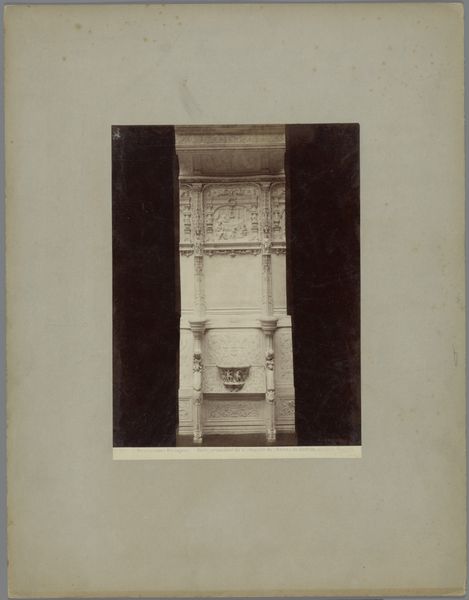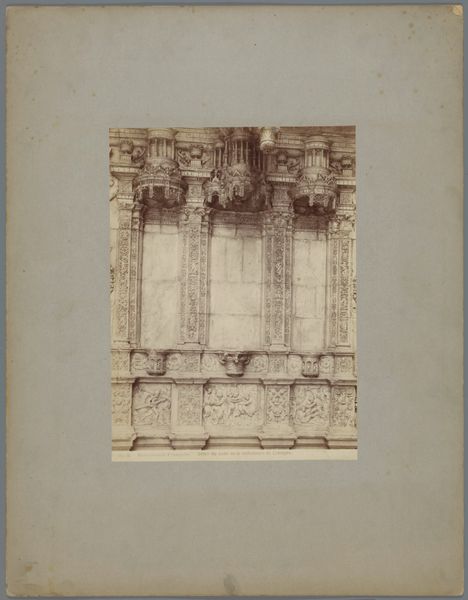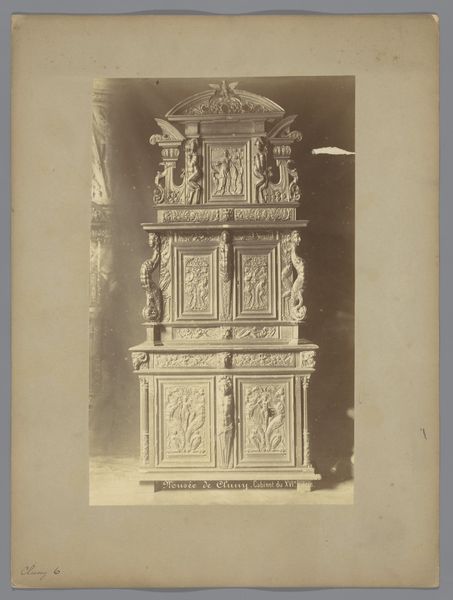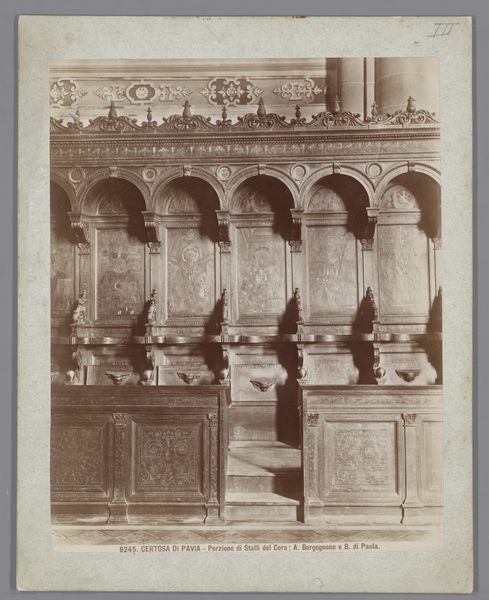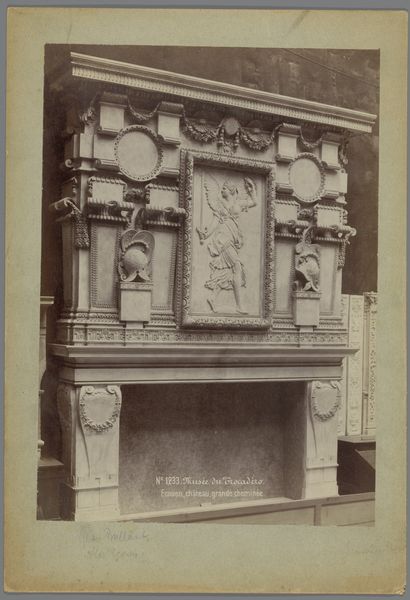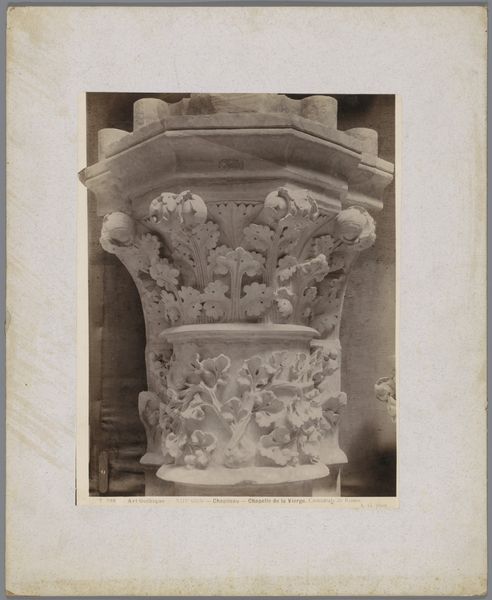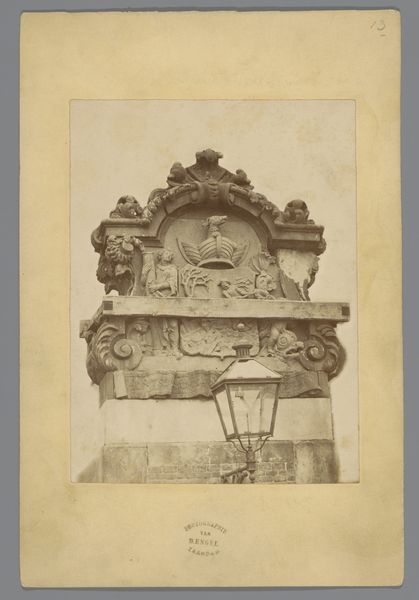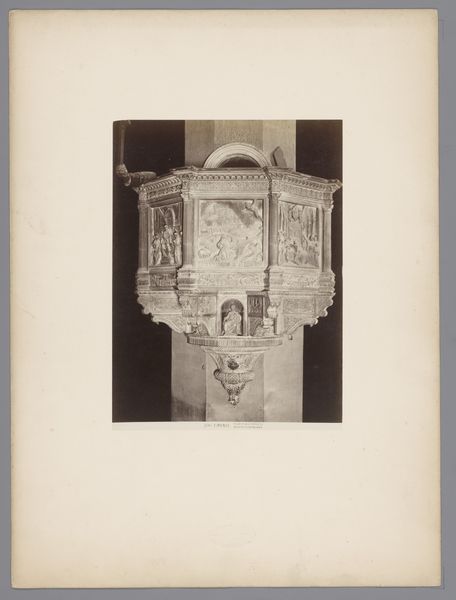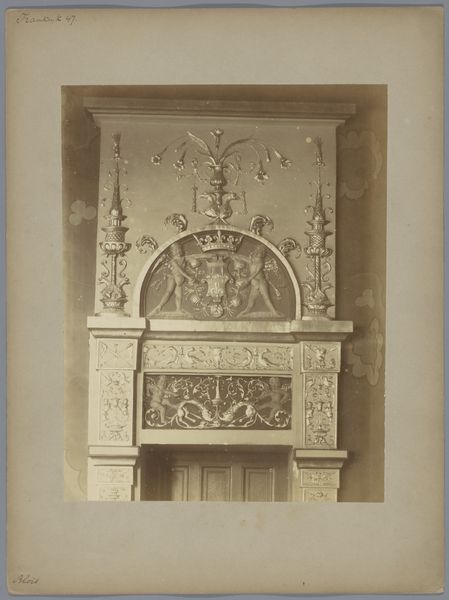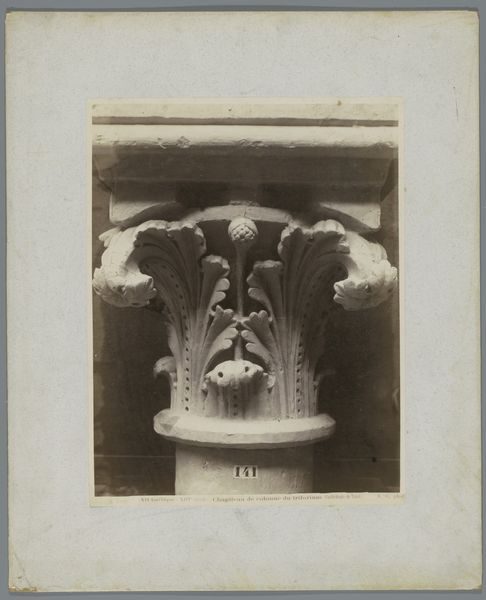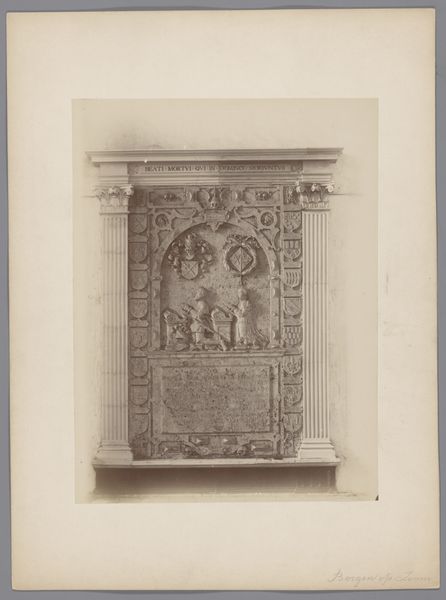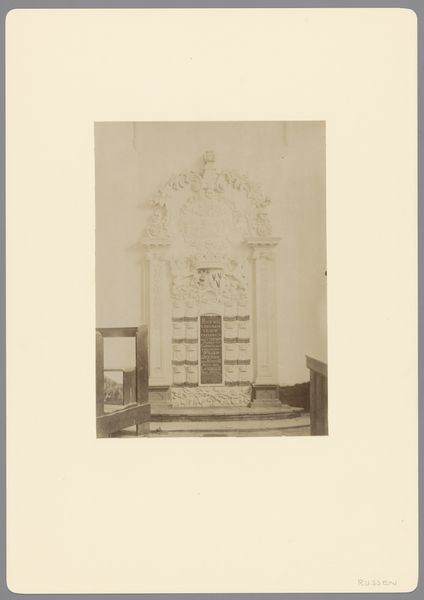
Detail van het doksaal in de kathedraal Saint-Étienne te Limoges voorstellend een engel met een krans c. 1875 - 1900
0:00
0:00
adolphegiraudon
Rijksmuseum
print, relief, photography, architecture
#
portrait
# print
#
relief
#
photography
#
history-painting
#
architecture
Dimensions: height 261 mm, width 193 mm
Copyright: Rijks Museum: Open Domain
Curator: Here we have a photograph titled "Detail van het doksaal in de kathedraal Saint-Étienne te Limoges voorstellend een engel met een krans," taken sometime between 1875 and 1900. It offers us a glimpse of a specific section of the Saint-Étienne cathedral’s rood screen. Editor: The immediate feeling is one of grandiosity. The frame hints at this magnificent scale with its architectural style, but also, something feels a little unsettling about it, like it's a relic of past dominance and control. Curator: Indeed. These screens were often commissioned to visually and physically separate the clergy from the laity. This photograph is a documentation of a highly ornate architectural element serving as a spatial and symbolic boundary. Editor: Looking closer at the angelic figure in the center, the angel presenting a wreath looks strangely powerful, given their location above the altar. Is it a genuine offering, or another symbol of religious imposition? I see history-painting and architectural detail. Curator: It raises questions about power structures. It's a moment frozen in time by Adolphe Giraudon; however, the choice to isolate this fragment through photography makes you wonder what purpose this kind of object fulfills for our understanding of it. The framing and choice of focus directs a modern gaze upon its legacy. Editor: Right. It's divorced from its immediate context now. The labor put into the carving seems intense; I am intrigued to imagine the person that worked on it in the end of the 19th Century, but simultaneously wonder if we are merely looking at a piece of furniture that once held such sway. What do we truly take away from it now? Curator: That ambiguity is where the richness lies, I think. It prompts us to reconsider how we engage with artifacts of religious and social control today. Perhaps acknowledging the beauty but also questioning its implicit message helps reveal both intent and legacy. Editor: Yes, exactly! It transforms the experience, this reevaluation through historical lens and context. It is not enough to see, but to understand and dissect meaning, from what was intended versus how things end up later.
Comments
No comments
Be the first to comment and join the conversation on the ultimate creative platform.
